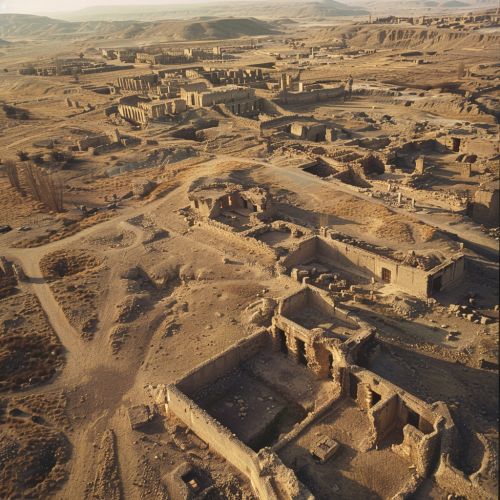Sasanian Empire
Origins and Establishment
The Sasanian Empire, also known as the Sassanian, Sasanid, or Neo-Persian Empire, was the last kingdom of the Persian Empire before the rise of Islam. Named after the House of Sasan, it ruled from 224 to 651 AD, making it one of the most significant historical periods in Iranian history. The Sasanian Empire succeeded the Parthian Empire and was recognized as one of the leading world powers alongside its neighboring arch-rival, the Roman-Byzantine Empire, for a period of more than 400 years.


Political Structure and Administration
The Sasanian Empire was a theocratic monarchy where the king was not only the secular leader but also the spiritual leader. The king was considered the representative of Ahura Mazda, the supreme god in Zoroastrianism, on earth. The Sasanian political structure was complex, with power concentrated in the hands of the king and the seven great noble families, who were involved in most state decisions.
Economy
The Sasanian economy was based on agriculture, trade, and heavy taxes. The empire was rich in resources, including gold, silver, copper, salt, textiles, and livestock. Trade was a significant source of revenue, with the Sasanian Empire being a critical part of the Silk Road, which connected China, India, and the Roman Empire.
Military
The Sasanian military was one of the most powerful in the world during its time. It was divided into the standing army, which was maintained by the state, and the feudal army, which was raised by the nobility during times of war. The Sasanian military was known for its heavy cavalry, the Savaran, and its war elephants.
Religion
The state religion of the Sasanian Empire was Zoroastrianism, but other religions, including Christianity, Judaism, Manichaeism, and Buddhism, were also practiced. The Sasanians were known for their religious tolerance, although there were periods of persecution, particularly during the reign of Shapur II.
Culture and Society
Sasanian culture was a blend of Persian, Parthian, and Hellenistic influences. The Sasanians made significant contributions to art, architecture, music, literature, and science. The society was hierarchical, with the king and the nobility at the top, followed by the priests, warriors, secretaries, commoners, and slaves.
Decline and Fall
The decline of the Sasanian Empire began in the 6th century AD due to economic difficulties, religious unrest, and external pressures from the Romans and the Huns. The final blow came from the Arab Muslim invasions in the 7th century, leading to the fall of the Sasanian Empire and the beginning of the Islamic period in Iran.
Legacy
The Sasanian Empire left a lasting legacy in the Middle East and beyond. Its political structure, administration, and culture had a significant influence on subsequent Islamic, Persian, and Turkic societies. The Sasanian period is considered a high point in Iranian civilization and has been described as the peak of Iran's glory in the pre-Islamic era.
